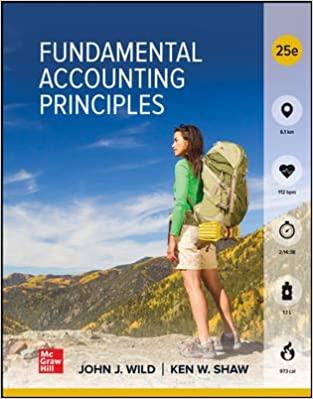








C4-2 (Algo) From Recording Transactions (Including Adjusting Journal Entries) to Preparing Financial Statements and Closing Journal Entries (Chapters 2, 3, and 4) [LO 2-3, LO 3-3, LO 4-1, LO 4-2, LO 4-3, LO 4-4, LO 4-5, LO 4-6] [The following information applies to the questions displayed below.] Brothers Harry and Herman Hausyerday began operations of their machine shop (H & H Tool, Incorporated) on January 1, 2020. The annual reporting period ends December 31. The trial balance on January 1, 2021, follows (the amounts are rounded to thousands of dollars to simplify): Account Titles Debit Credit Cash $3 Accounts Receivable Supplies. Land Equipment Accumulated Depreciation. Software Accumulated Amortization Accounts Payable. Notes Payable (short-term) Salaries and Wages Payable Interest Payable Income Tax Payable Common Stock Retained Earnings Service Revenue Salaries and Wages Expense Depreciation Expense Amortization Expense Income Tax Expense Interest Expense 5 12 0 55 19 000000 0 0 70 8 S Hins www 0 Income Tax Expense Interest Expense Supplies Expense 0 0 Totals $ 94 $ 94 Transactions and events during 2021 (summarized in thousands of dollars) follow: a. Borrowed $12 cash on March 1 using a short-term note. b. Purchased land on March 2 for future building site; paid cash, $9. c. Issued additional shares of common stock on April 3 for $29. d. Purchased software on July 4, $10 cash. e. Purchased supplies on account on October 5 for future use, $18. f. Paid accounts payable on November 6, $13. g. Signed a $25 service contract on November 7 to start February 1, 2022. h. Recorded revenues of $150 on December 8, including $35 on credit and $115 collected in cash. Recognized salaries and wages expense on December 9, $80 paid in cash. J. Collected accounts receivable on December 10, $19. Data for adjusting journal entries as of December 31: k. Unrecorded amortization for the year on software, $5. 1. Supplies counted on December 31, 2021, $10. m. Depreciation for the year on the equipment, $6. n. Interest of $1 to accrue on notes payable. I o. Salaries and wages earned but not yet paid or recorded, $12. p. Income tax for the year was $8. It will be paid in 2022. Next > Sc > 5 H T accounts. Enter beginning balances and post journal entries from Part 2, the adjusting journal entries from Part 4, and the closing entry from Part 7. (Enter your answers in thousands of dollars.) 3 Answer is not complete. Cash Accounts Receivable Debit Credit Debit Credit 45 Beginning Beginning Balance 50 Balance (a) 9 (b) (h) 190) (c) 10 (d) (h) 13 (1) G 80 (0) Ending Balance Ending Balance Credit Credit Beginning Balance Beginning Balance (b) (e) 1000 Debit 30 12 29 115 19 66 Supplies 12 18 0000 Debit $ 35 21 Land 00 90 Part 7 of 9 10 points 8 00:37:39 Debit Beginning Balance (e) Ending Balance Beginning Balance Ending Balance Beginning > Debit Debit Supplies 12 18 30 Equipment 55 55 Software 19 Credit Credit Credit Land 0 90 9 Accumulated Depreciation + Accumulated Amortization Debit Beginning Balance (b) Ending Balance Beginning Balance Ending Balance Beginning Debit Debit Credit Credit 60 60 12 Credit 8 X Software 19 10 29 Accounts Payable. 50 13 18(e) 10 Salaries and Wages Payable Debit 0 Debit Beginning Balance (d) Ending Balance Beginning Balance (1) Ending Balance Beginning Balance Debit Credit Credit Credit Accumulated Amortization 16 Notes Payable (short-term) 3 Interest Payable Debit Beginning Balance Ending Balance Beginning Balance Ending Balance Beginning Balance Debit Debit Credit 8 8 x Credit 00 12 (a) 12 Credit 09 Retained Earnings 80 8 Salaries and Wages Expense Debit 80 80 Amortization Expense Debit Beginning Balance. Ending Balance Beginning Balance (1) Ending Balance Debit Credit Credit Credit Debit Beginning Balance Ending Balance Beginning Balance Ending Balance Debit Debit Service Revenue Depreciation Expense 0 61 6 Income Tax Expense Credit 150 150 (h) Credit Credit Salaries and Wages Payable Debit 00 Beginning Balance Ending Balance Beginning Balance Ending Balance Beginning Balance Debit Debit 77 12 X 89 Income Tax Payable Retained Earnings Credit Credit 0 80 8 Credit 8 Debit Beginning Balance Ending Balance Beginning Balance Ending Balance Beginning Balance Debit Interest Payable Common Stock Service Revenue Debit Credit 0 10 1 Credit 70 29 (c) 99 Credit 150 (h) O Retained Earnings 8 Salaries and Wages Expense Debit 80 80 Amortization Expense. Debit Beginning Balance Ending Balance Beginning Balance (1) Ending Balance Dahit Credit 8 Credit Credit Debit Beginning Balance Ending Balance Beginning Balance Ending Balance Debit Debit Service Revenue Depreciation Expense 6 3 6 Income Tax Expense Credit 150 150 (h) Credit Credit Ending Balance Beginning Balance Ending Balance Beginning Balance Ending Balance 80 Amortization Expense 0 8 x 8 Interest Expense 0 1 1 Debit Debit Credit Credit Ending Balance Beginning Balance Ending Balance Beginning Balance Ending Balance Debit Debit 28 6 Income Tax Expense 0 8 8 Supplies Expense 0 20 20 228 # Credit Credit Next >
























